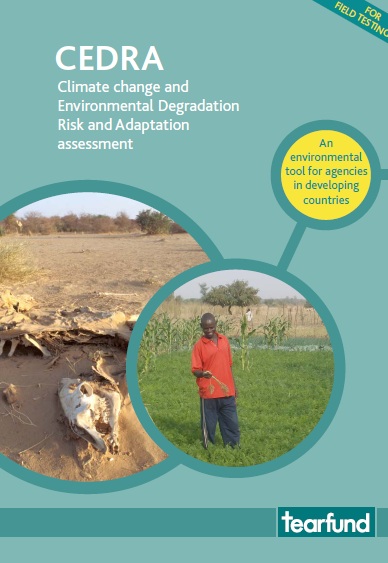Friday, June 04, 2010
GLOBAL: Tool to help NGOs adapt to climate risks

JOHANNESBURG, 3 June 2010 (IRIN) - Climate change is not only testing the resilience of people, but also of development and disaster risk reduction projects set up to help people. Now, there may be a way to make the gamble more favourable.
If you were a small or medium-size NGO trying to set up a project in a flood-prone area in Bangladesh or Mozambique, you might not be aware of the climate risks. And if you knew that floods might wash away any structure you put up, what do you do?
Well, you build a structure with “two walls that will collapse on impact by a rapid flood, so the remainder of the house remains standing and occupants are not harmed, but in the knowledge that repairs will be necessary,” is the advice given by a new environmental tool.
Tearfund, an international relief and development NGO with experience dating back to the 1990s, designed the tool to help small and medium-size NGOs assess the risks, manage them, and - where possible - adapt to them.
The tool, called Climate change and Environmental Degradation Risk and Adaptation assessment (CEDRA), helps NGOs access and understand climate change and environmental degradation, and the science behind it, and compare this with local experience of environmental change.
“There are lots of tools out there to help national governments or donors, but we assessed them and realized they did not really help the small NGOs working in developing countries,” said Sarah Wiggins of Tearfund.
The NGO developed the tool - which Wiggins described as a “framework” - by using their experience of problems as a result of changing weather patterns in countries like Afghanistan.
She presented the CEDRA at a side event at the latest round of climate change talks in Bonn, Germany, which examined “Practical solutions to tackle climate vulnerability – from climate information to capacity-building”.
The event
CEDRA involves six steps: identifying environmental hazards, prioritizing hazards that need to be addressed, selecting adaptation options, addressing unmanageable risks, considering new project locations, and a process of continual review, which should take place every year.
It provides a check-list for each of the steps, with samples of questions that need to be asked, and underlines the involvement of beneficiary communities at every stage.
“Ask open questions to gather information,” the CEDRA assessment advises. “Instead of asking ‘Is there less rain?’ ask ‘What is the weather situation like now? How has it changed over the last ten years? Or since you were a child?’”
Knowing the community, tapping their information, and understanding their needs can help make or break a project, as Tearfund discovered while trying to launch a radio project in Afghanistan in the 1990s to teach people how to adapt to climate change and environmental degradation.
A 70-year-old man opposed the project, saying, “Disasters are the will of God. Why are you trying to interfere with God’s will?” Tearfund’s local team responded by telling them “the story of Nu Allai Salam, from the Quran, who listened to the will of God and prepared for the coming disastrous flood and saved himself and his family and all the animals.”
This was acceptable to the old man, who was impressed by the team’s Quranic knowledge and how they wanted to use it in their project activities. “The radio project is now highly regarded in informing people how to adapt to the impacts of climate change and environmental degradation,” Wiggins said.
“Managing risk has been promoted through religious teachings throughout history,” she commented. The tool is being piloted in 10 countries and Tearfund hopes to roll it out in others countries in the next five years. “We are still learning and improving on it.”
See http://tilz.tearfund.org/Topics/Environmental+Sustainability/CEDRA.htm